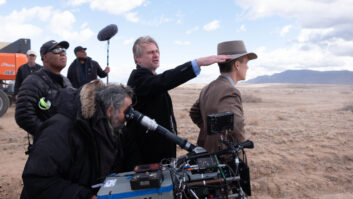The Academy of Motion Picture Arts and Sciences has announced nine scientific and technical achievements to be honoured at its awards on 9th February 2019.
Taking place at the Beverly Wilshire in Beverly Hills, the ceremony will award 27 individual recipients for technical achievements in the film industry.
In addition, cinematographer Curtis Clark will receive the John A. Bonner Award for his service to the industry.
Unlike other Academy Awards, the Scientific and Technical Awards are not confined to work completed in 2018 but highlight a proven record of contribution to filmmaking.
Doug Roble, chair of the Scientific and Technical Awards Committee, said: “Each year, the Academy forms a diverse committee made up of nearly 60 experts on the technology of filmmaking tasked with examining the tools that artists use to create films.
“This year, the committee is recognising nine technologies from around the world. These extraordinary contributions to the science of filmmaking have elevated our art form to incredible new heights.”
The winners are:
- Eric Dachs, Erik Bielefeldt, Craig Wood and Paul McReynolds for the design and development of the PIX System’s novel security mechanism for distributing media
- Per-Anders Edwards for the initial design and development of the MoGraph toolset in Cinema 4D for motion graphics
- Paul Miller for the software design, principal engineering and continued innovation, and to Marco Paolini for the efficient, artist-friendly workflow design of the Silhouette rotoscope and paint system
- Paul Debevec, Tim Hawkins and Wan-Chun Ma for the invention of the Polarized Spherical Gradient Illumination facial appearance capture method, and to Xueming Yu for the design and engineering of the Light Stage X capture system
- Thabo Beeler, Derek Bradley, Bernd Bickel and Markus Gross for the conception, design and engineering of the Medusa Performance Capture System
- Charles Loop for his influential research on the fundamental scientific properties of subdivision surfaces as 3D geometric modelling primitives
- David Simons, Daniel Wilk, James Acquavella, Michael Natkin and David Cotter for the design and development of the Adobe After Effects software for motion graphics
- Thomas Knoll and John Knoll for the original architecture, design and development, and to Mark Hamburg for his continued development and engineering of Adobe Photoshop
- Ed Catmull for the original concept, and to Tony DeRose and Jos Stam for their pioneering advancement of the underlying science of subdivision surfaces as 3D geometric modelling primitives
- Curtis Clark in recognition of extraordinary service to the motion picture industry







